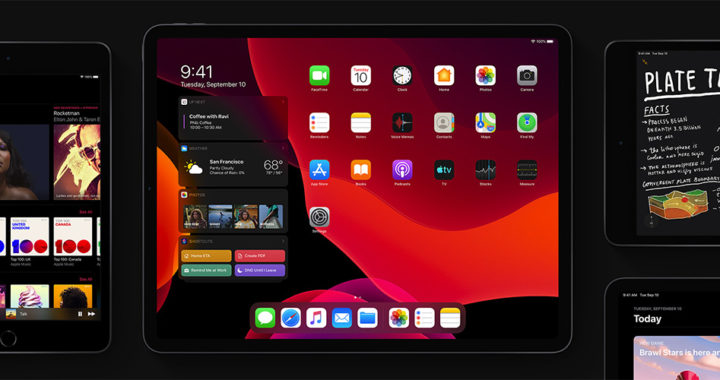The iPadOS is an operating system developed by Apple based on iOS and specifically for the iPad line of tablet computer devices. Announced during the 2019 Worldwide Developers Conference and officially released on 24 September 2019, this dedicated OS is the successor to the iOS 12 on iPad.
The Pros: Advantages and Benefits of iPadOS
Note that the iPod Touch, the iPhone, and the iPad initially had similar sets of features and functionalities. The iPad was essentially a larger version of the iPod Touch and the iPhone. However, over the years, the tablet continued to develop an expanding set of differentiating features and, of course, use-case functionalities. There is also a specific market segment for users of tablet computers.
Apple developed and launched the iPadOS to capitalize further on the growing differentiation and, thus, the advantages of iPad computers. Hence, with a new dedicated operating system, there is a greater emphasis on multitasking to position the device as a mobile productivity tool, as well as a capable entertainment consumer electronics device.
Below are the key advantages and benefits of this operating system:
• Exclusive multitasking features such as the Split View, which allows the running of two apps side-by-side, and Slide Over, which provides quick access to apps running on the background.
• The introduction of the Stage Manager beginning with the release of iPadOS 16 in June 2022 also equips M1-powered iPad devices with better multitasking capabilities.
• Additional multitasking features include a capability to run the same app across multiple spaces, as well as to see all the spaces a user has opened with a single app just by tapping a specific icon in the Dock.
• There is also a new Home Screen that can display up to six app icons in a row. It also allows a user to pin a widget bar containing useful widgets such as a calendar, weather forecasts, and app shortcuts, among others.
• New gestures extend the user interface of the iPad. These include cursor navigation through dragging; simpler text selection by dragging a finger over the content; and intelligent text selection with a double tap for a single word, three taps for a sentence, and a whole paragraph with four taps.
• The onscreen keyboard has new defining features: A floating keyboard that can be resized and moved across the screen area for more accessible typing, and the QuickPath typing that allows a user to type by swiping one letter to the next.
• Another advantage of the iPadOS is a redesigned file management app that provides a convenient and better organization of files. The OS also equips an iPad with the ability to connect to an external HDD, SSD storage, or a USB flash drive.
• Safari for iPad has also been redeveloped. This web browser from Apple has made desktop viewing a default for iPad devices. Hence, websites run on a full desktop version when using Safari via the iPadOS.
• The Sidecar app is another interesting feature exclusive to iPadOS. It enables an iPad device to act as a secondary display for macOS Catalina computers wired or wirelessly. Mac users would benefit from having a second monitor.
• Another advantage of iPadOS, especially when compared with Android is that it requires less RAM and has better hardware-software optimization. Note that Android requires more RAM by default.
The Cons: Disadvantages and Limitations of iPadOS
It is still important to note that the new dedicate OS for the iPad is not perfect. Furthermore, despite its improved multitasking features, it is not a complete replacement for macOS and other desktop operating systems such as Windows or Ubuntu.
Below are the cons and limitations of this new operating system:
• The multitasking features can be confusing because of the different associated apps, features under the system, and not to mention the different gestures or inputs. It can take a while for users to familiarize themselves with multitasking via their iPads.
• Note that the Home Screen improvements provide some enhanced user experience. However, the Android OS has been providing customizable home screens, app drawers, widgets, and launchers.
• It would be hard to say whether the new features of the OS would be usable to average iPad users. For people who are used to using their tablets as it is, the new improvements may not matter much.
• Of course, the expanded user interface runs counterintuitive to the original selling proposition of iPad and the iOS over Android tablets and desktop computers, which centers on simplicity, minimalism, and user-friendliness.
• Android manufacturers have a better solution for multitasking via tablets and smartphones. For example, Samsung has been offering split-screen and resizable and multiple apps. In addition, the Samsung DeX feature found in top-tier Samsung phones and tablets allows users to dock or plug their devices and provide them with a full desktop experience.






